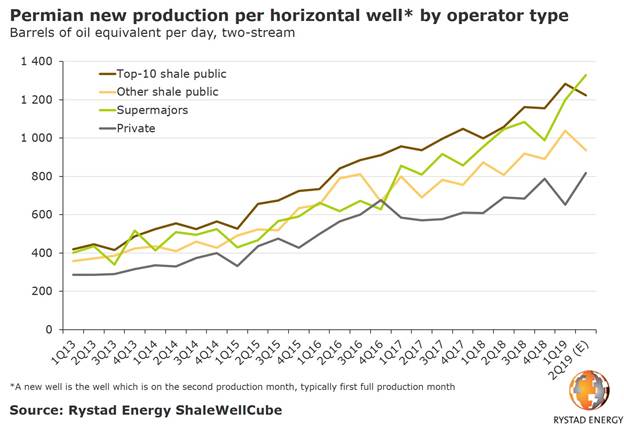A handful of industry insiders have recently speculated that the Permian may be on its way out, noting that well productivity in the Permian is declining. In fact, the truth is quite the opposite.
E&P operators active in the Permian Basin, spanning parts of Texas and New Mexico in the US, have been facing a growing number of concerns about the ability of the industry to achieve additional improvements in well productivity. Some market participants argue that the average well performance in the Permian is already declining, based on speculations of depletion of core inventory, as well as a growing share of child wells and well spacing challenges.
“After careful analysis, we do not find sufficient evidence in the data to support these speculations. We conclude that the average new production per well in the basin matches the all-time highs seen in early 2019, despite depletion concerns,” says Artem Abramov, head of shale research at Rystad Energy.

New production is defined as production coming from wells in their second month of production. The second month is typically the first full month of production, and in most cases, also the peak production month for unconventional wells.
“A typical horizontal Permian well currently produces approximately 830 barrels per day of oil during its second month of production, which is an all-time high level,” Abramov added.
The top 10 public shale E&Ps have been setting the learning curve across basins, and historically are several quarters ahead of the industry in terms of average productivity per well. This is explained by both their earlier entry into the basin, faster learning process due to the scale, and a larger number of high-grading opportunities due to the acreage size.

“A remarkable observation based on preliminary production data for the second quarter of the year, is the record-high new well productivity for supermajors, which might have surpassed the top 10 public shale E&Ps for the first time since 2014-2015,” Abramov remarked.
One driver of horizontal well performance is the length of the productive interval (perforated lateral length or PLL). The average PLL in the Permian increased from 5,000 feet in the first quarter of 2013 to 8,500 feet in the second quarter of 2019, a 70% increase.
If we normalize new production per horizontal well to an 8,000-foot well design, we find that the most significant structural improvements in average normalized productivity happened from 2013 to 2016. These improvements were followed by two years of flat development at a time when Permian activity ramped up dramatically, and a lot of less mature new acreage positions started contributing to the average with sub-optimal well productivity.

“Interestingly, we have been observing a new period of improvement since the second half of 2018 as a result of high-grading in the current capital discipline environment and an increasing share of acreage moving into field development mode,” Abramov observed.

Follow us on social media: